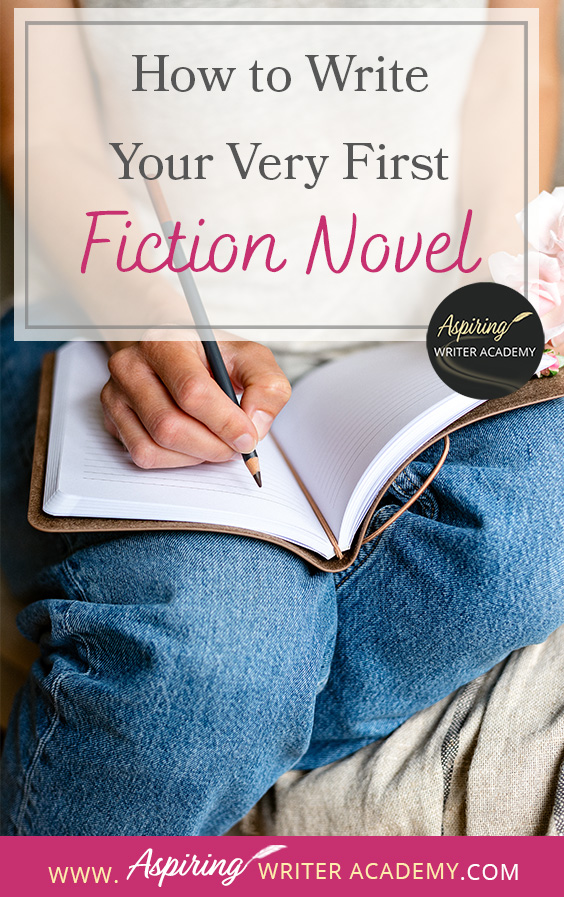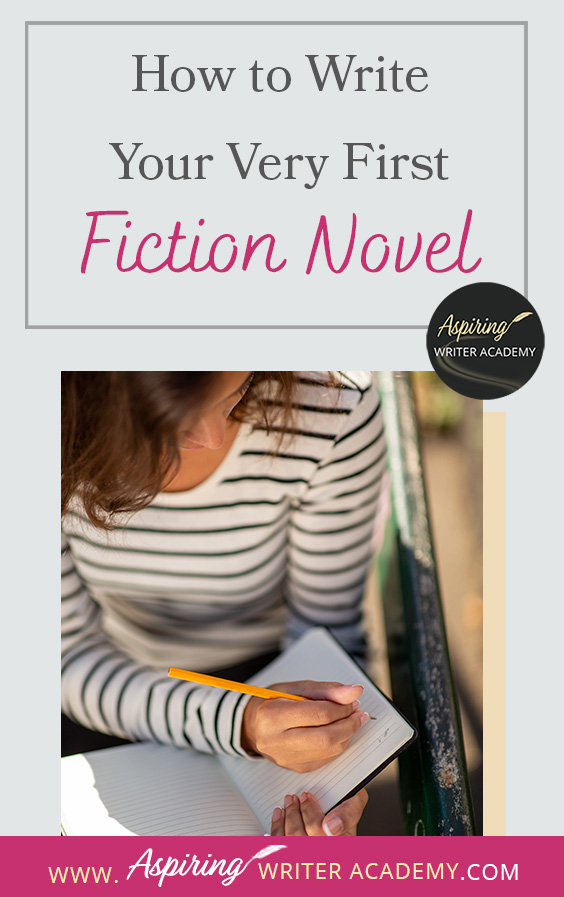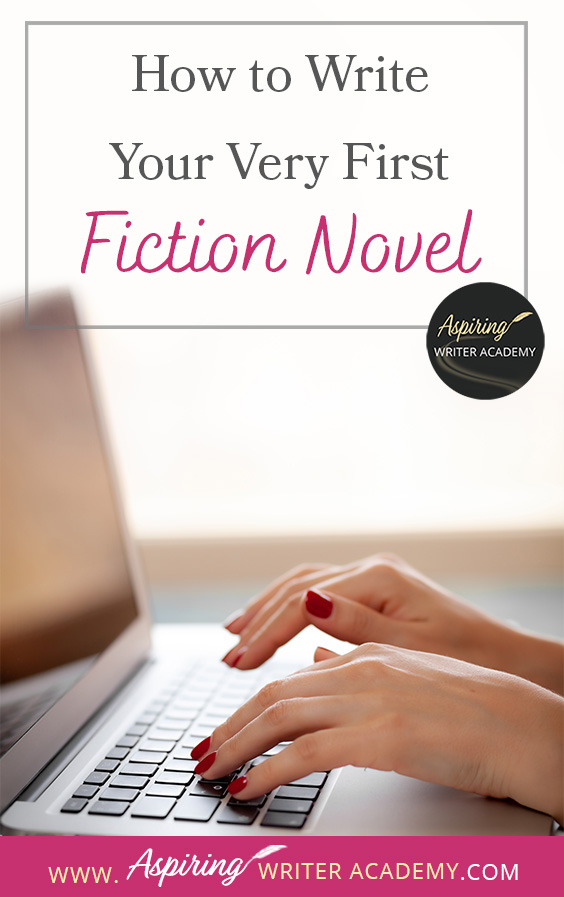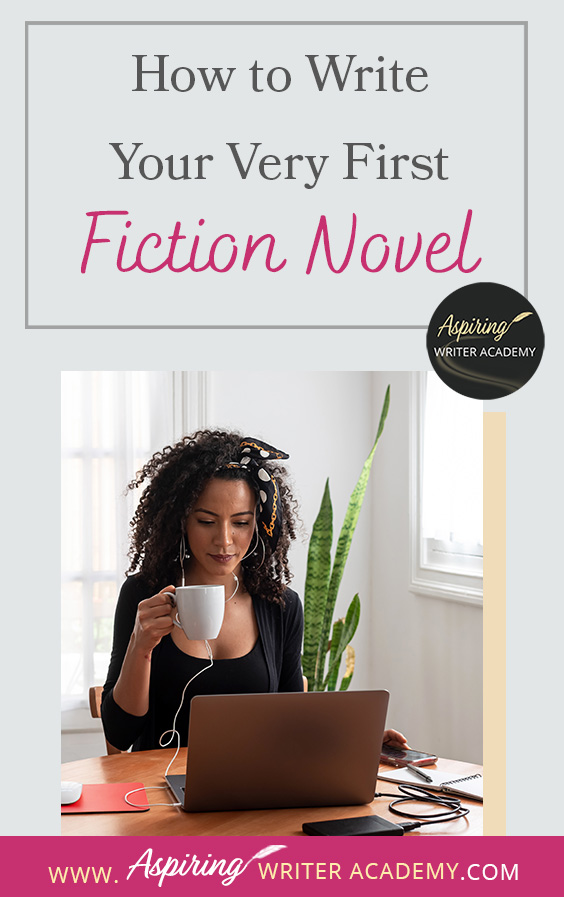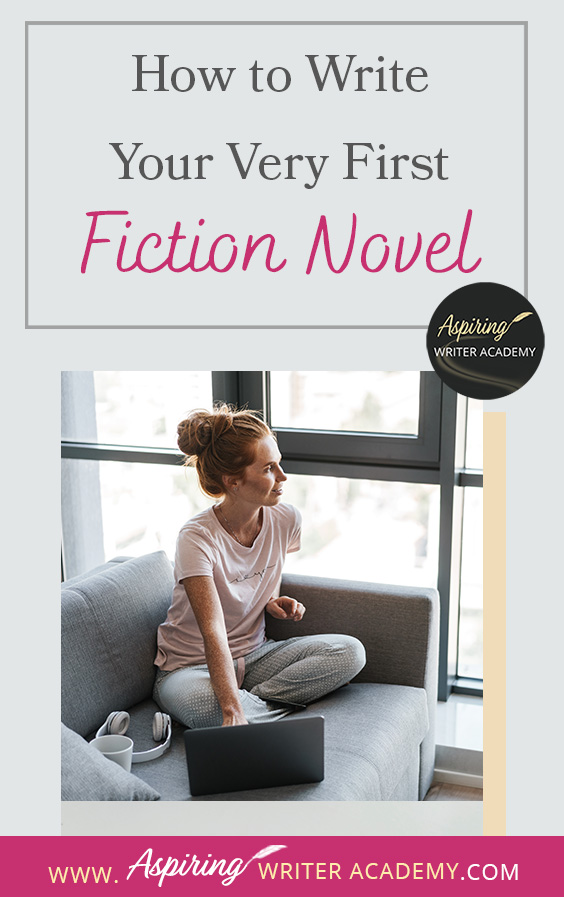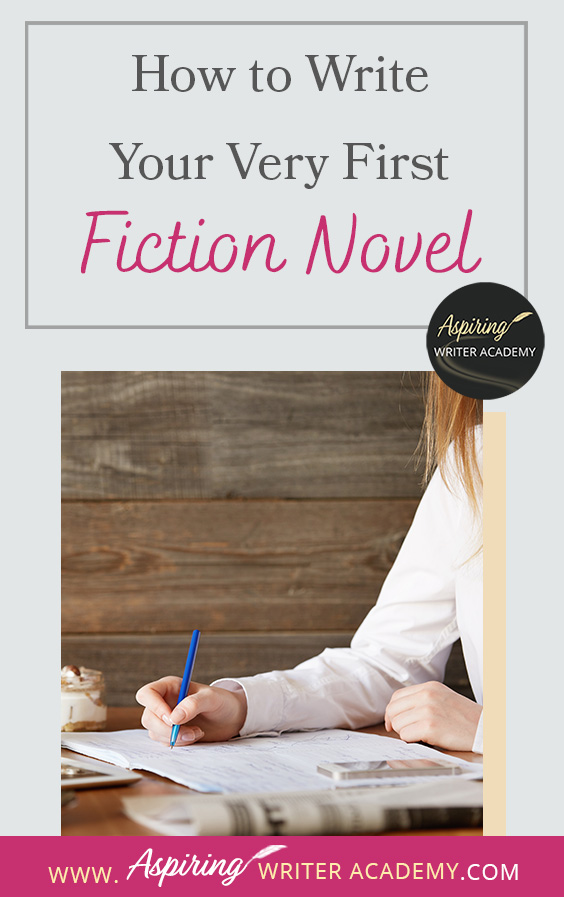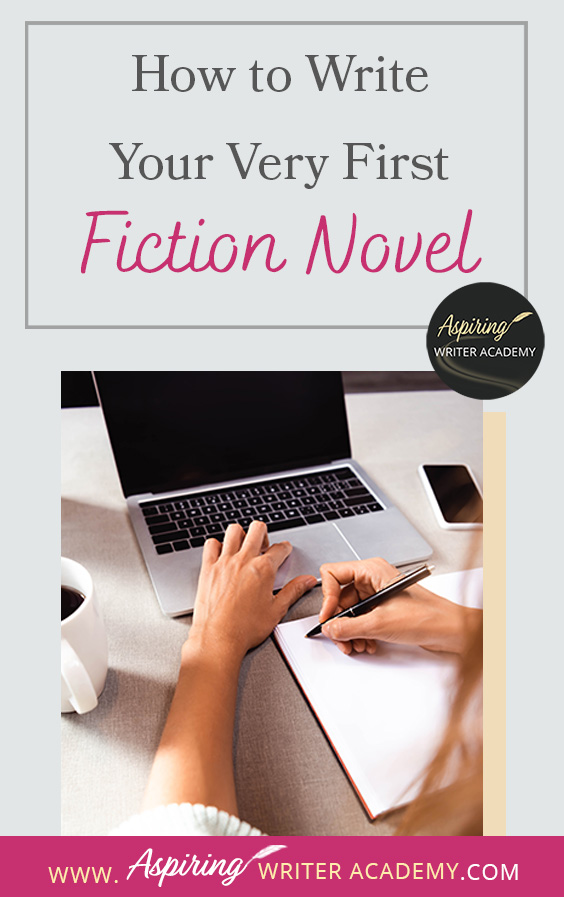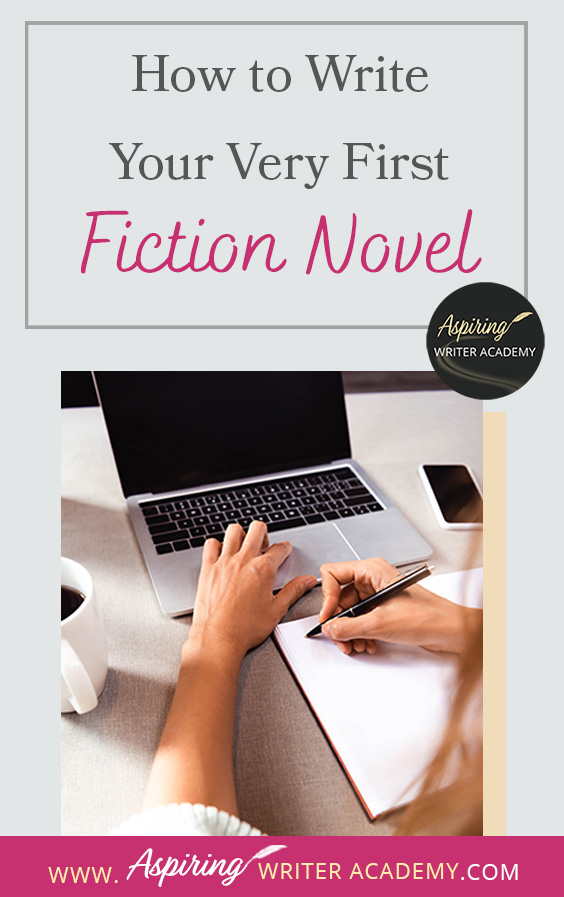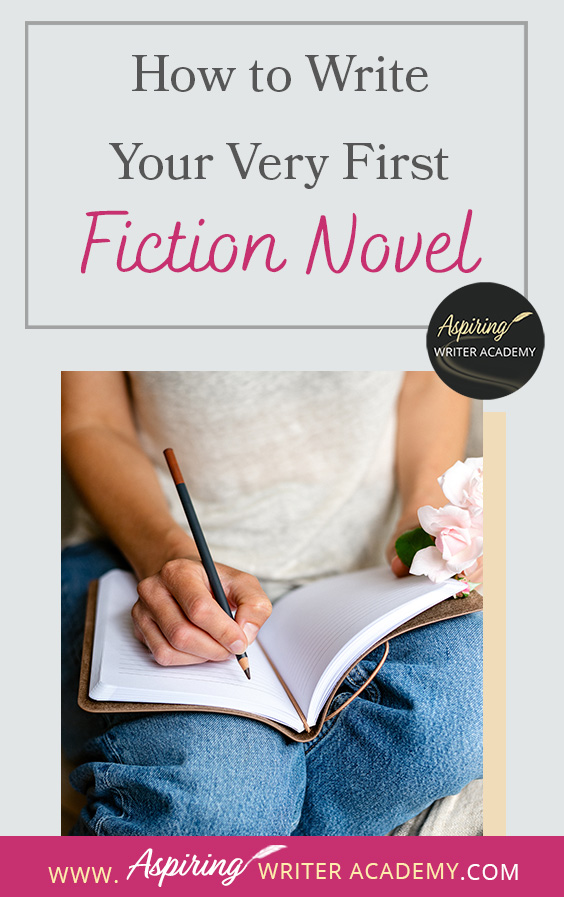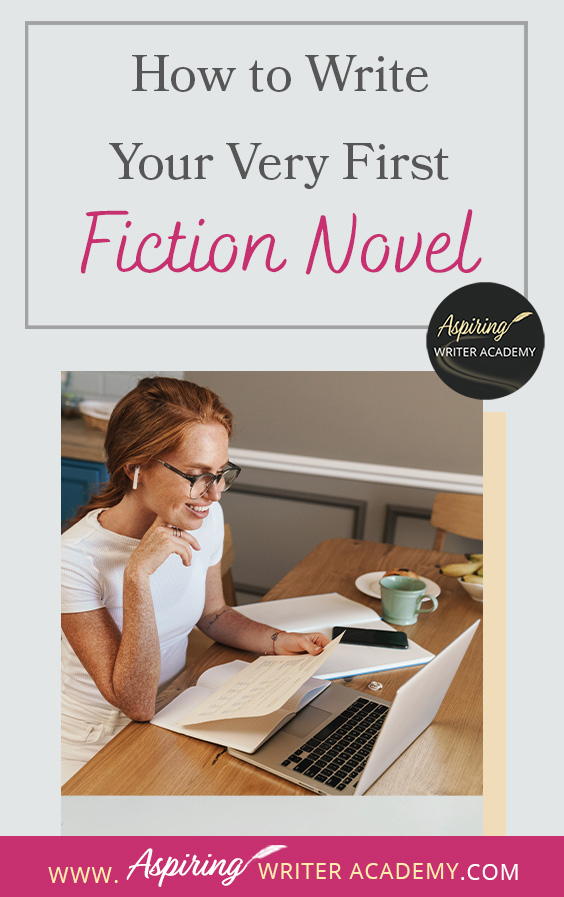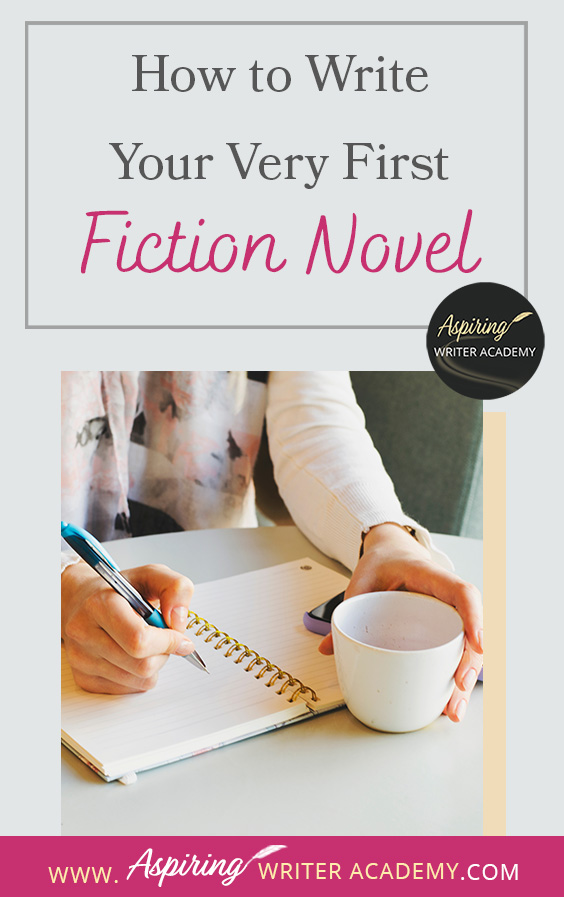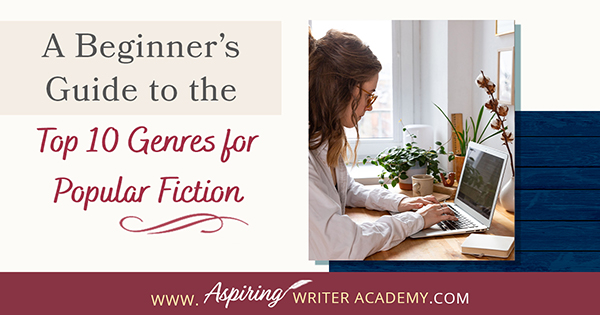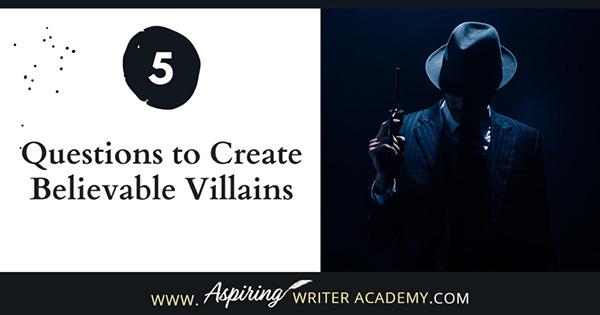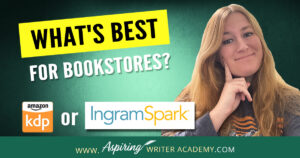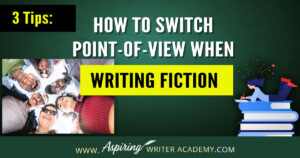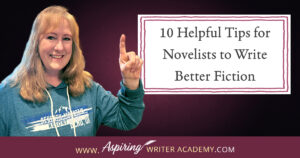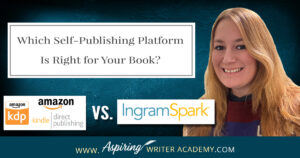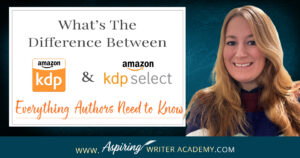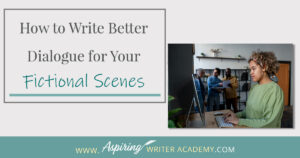How to Write Your Very First Fiction Novel
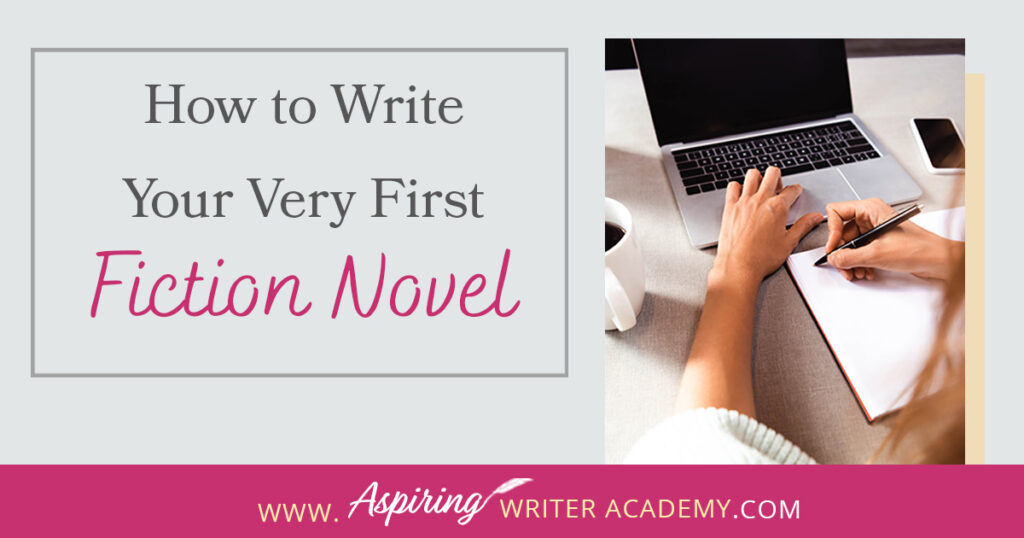
Have you ever thought of writing a book? Do you need help coming up with a story idea or creating a working outline? How do you create a cast of characters? Do you need a villain? What is a simple way to plot if you do not have any experience?
What are the basics you need to know to get started?
In our post, How to Write Your Very First Fiction Novel, we go over the first steps you need to take to turn your story idea into a working manuscript that you can be proud of.
Follow along as we discuss:
- The Story Idea
- Your Cast of Characters
- Three Game-Changing Moments
- Confronting the Opposition
- The End
- Next Steps, Tips, & Advice
1) The Story Idea
- What do you like to read? Before you write your first novel, you will need to read lots of books and analyze movies to grasp basic story structure. What types of stories are you most drawn to? Romance? Mystery? Horror? Fantasy? Suspense? Pick a genre and list key elements that appeal to you. Decide what kind of story you want to write.
Learn more in our blog post: A Beginner’s Guide to the Top 10 Genres for Popular Fiction
- Now brainstorm a specific story idea for a fictional novel in your selected genre. Search magazines, newspapers, or online headlines for ideas. Is there a funny incident that happened to you this week or a piece of overheard conversation that has spurred a story idea? Maybe something you read in a book or saw on TV gave you an idea for a book of your own? Ideas are all around you. Take a notebook and jot down ideas as they come to you this week. What do you find most interesting? Which topics? Do you want to write with a specific theme in mind? Or about a quirky character?
- You should also consider what kind of story you want to write in terms of length. (Always go by computer calculated word count. In Microsoft Word it is located under the ‘Review’ tab on your dashboard.) It is also important to research publisher guidelines for exact requirements if you plan to submit your novel to a publishing house for publication.
Short Story: (1,500—7,500 average words or 3 to 30 pages)
Novella: (20,000—40,000 words)
Novel: (55,000—100,000 words)
2) Your Cast of Characters
Once you have an interesting story idea in your selected genre with a targeted word count, it is time to develop the main characters for your very first fiction novel.
- Protagonist: Who is this story about? Even if you have many characters in mind, there must be one who will be the main character. Even in a romance, there will be one character who is the primary focus, usually the one with the most to lose. What does this character most want? Why does he want it? Your main character must have a story-worthy goal he plans to pursue during the course of the story.
Learn more in our blog post: Why Your Characters Need Story-Worthy Goals
- Antagonist: Who will oppose the protagonist’s goal? Who (or what) is the opposition your main character will face? What obstacles does the antagonist present that the protagonist will have to overcome? Is this antagonist (character, health problem, force of nature) simply opposition (with an opposing view) or a true villain, who means to harm the protagonist and use nefarious methods to stop him from achieving his goal?
Learn more in our blog post: 5 Questions to Create Believable Villains
Why is it important the antagonist try to stop your main character? Do you need a villain? No, but you do need powerful opposition, an antagonist, to create conflict in the story. A story will not hold the reader’s interest if there is no conflict. Give your protagonist a mighty foe.
A good story is about a character with a goal who must overcome the opposition trying to prevent him from achieving that goal or dire consequences will happen. What are the stakes? What happens if the character does not achieve his goal by the story end? How will his or her life and possibly the lives of others be affected?
- Sub-characters: In a romance, the antagonist can be the love interest until the couple finally resolves their differences and falls in love. But if your story has another antagonist or villain, you may also want to include a romantic interest, family member, friend, sidekick, mentor, minion, or a variety of other characters into the story. The purpose of these sub-characters is to either help or hinder the main character in pursuit of his or her goal. Every character must be included for a specific reason, or they do not belong in the story. Be careful you do not include too many sub-characters. Combine roles to make them perform double or triple duty in your fictional novel.
Learn more in our blog post: How to Create a Diverse Cast of Characters for Your Fictional Novel
- Choose Point-of-View Characters: Once you have your main cast of characters, choose only one or two to be point-of-view characters (POV). If this is your first novel you will not want to write from more than one or two perspectives. Publisher’s guidelines also dictate how many POV characters you should include in your novel.
Your protagonist, the main character of the story, will be one POV character. If writing a romance, the love interest will be the second. If you are writing a suspense or murder mystery, the murderer may or may not be your second POV character. It is up to you to decide whose point of view would best suit the story.
When writing in a character’s POV, you will only include things that character can see, hear, smell, taste, feel, and sense in his/her scenes. Writing in your characters POV allows the reader to get inside their head and really get to know them. What does your character think about what he must do or how does he feel about the conflict at hand?
Choose two point-of-view characters for your fictional novel and practice writing a scene or journal entry in each character’s POV. How can you make each character unique and different in terms of personality and perspective? How does each one interact with others?
Learn more in our blog post: 12 Quick Tips to Write Dazzling Dialogue
3) Three Game-Changing Moments
If the thought of plotting or mapping out your story scares you, then let me make this easy for you. At a minimum, you need to include three big game-changing, significant events in your novel that turn the storyline in a completely different direction. These events should not just be random disasters, but they should be related to the character’s pursuit of his/her goal.
Example: From Disney’s “Beauty and the Beast”
Protagonist: Belle. Her goal: she wants an extraordinary life with travel and adventures, like she reads about in books.
1) The Inciting Incident occurs early in the story when a beast locks Belle’s father in the castle tower and to save him, Belle decides she must sacrifice her own freedom and take her father’s place. The enchanted castle staff believe she may be the one who can break the curse that keeps them trapped by falling in love with the beast.
2) Midpoint Reversal. When the beast gives Belle the enchanted mirror to see her father, she is shocked to see her father is sick. The beast, who now cares for Belle, realizes he must let her go so she may help her father. He gives her the mirror, so she has a way to look back on the beast and remember him. Now the castle staff do not believe the curse will ever be broken! And they were so close!
3) Dark Moment. The villain, Gaston, steals the mirror and leads the townspeople to the castle to kill the beast. The enchanted castle staff are in distress as they prepare for battle. Without Belle, the beast does not have the will to fight, and it looks like all is lost, the curse will never be broken. They believe they are doomed. It is the dark night of the soul, the bleakest moment of the entire story. (Usually occurs about ¾ point of book.)
Do you see how just these three events serve to tell the story? Each game-changing event turns the story around in a new direction and leads to the next, and the next. Will there be other scenes in your fictional novel? Certainly! Will they have cliffhangers, twists and turns, and suspense? They can! But these three events will have the most impact upon the storyline and the main characters. These are the true turning points or pivotal story-changers.
4) Confronting the Opposition
The Climax. Toward the end of the book, the protagonist and antagonist/villain need to have a face-to-face confrontation where the original story question (Will the protagonist achieve his goal?) is answered once and for all. This confrontation settles everything between the main character and the opposition. Who will win? Who will lose? Is there a compromise?
This is the biggest, most climatic scene or sequence of scenes in your entire novel. Everything in your novel thus far has led to this moment, which the reader has been waiting for since the beginning.
The Climax is the epic battle, the moment when your protagonist will use everything that he or she has learned on their story journey and give it their all to overcome the opposition and achieve his/her goal. The climax may be full of noise, action, and excitement or the intensity of the climatic situation may come to a head in a whispered life-altering exchange of dialogue, depending on the type of story you want to tell. There may be weapons of metal and steel or a lethal verbal exchange of words.
It is also important that you have the protagonist actively engaging in the climax against the opposition and not have another character save the day for him/her. This is the main character’s story, and he/she must be the one to make the decisions, choices, and summon the courage to face the opposition himself. Do not have a tornado or random outside source suddenly drop in to save the day and resolve the conflict at the end of your story. The climax should naturally spring from the previous events, and decisions made, in the story.
5) The End
How does the story end?
- Does the protagonist achieve his goal?
- Does the antagonist or villain get caught, go to jail, or only lose the battle for now with the promise to fight/terrorize others on a different day? (Examples from horror films: “Halloween” or “Friday the 13th”)
- Does the protagonist learn a lesson from going on this story journey?
- Does the protagonist decide to give up, change, sacrifice his goal for a better one?
- Does the romantic couple resolve their differences and commit to marriage?
- If the protagonist is changed, how will you show that change to the reader at the end of the story?
- Can you hint at what’s next for your character? What will he/she do in the days, months, years ahead?
6) Next Steps, Tips, & Advice
If you followed the steps listed above, you should now have a working outline for your very first fiction novel. Use it as a map to guide you as you begin to write your story from beginning to end.
- You can also check out all the free resources, blogs, and templates available to help further your education at aspiringwriteracademy.com
- Use our free Plot Sketch to help you study and analyze books and movies. https://www.aspiringwriteracademy.com/how-to-plot-your-fictional-novel-with-free-template-included/
- Study Scene & Sequel to hone individual scenes and go more in depth with story structure. https://www.aspiringwriteracademy.com/scene-sequel-the-secret-to-plotting-an-epic-novel/
- Join writers’ groups online and in-person, attend a local writer’s conference. The information that you learn there will be invaluable.
- Never stop learning. https://www.aspiringwriteracademy.com/50-top-resource-books-for-fiction-writers/
- Stay positive and keep picturing the end goal—holding your very first fiction novel in your hands. You’ve got this! We’re rooting for you!
We hope you have enjoyed How to Write Your Very First Fiction Novel and that you have gained some valuable tips to turn your story idea into a comprehensive working draft.
If you have any questions or would like to leave a comment below, we would love to hear from you!
If you like more help developing your story, you may wish to download our Free Brainstorming Your Story Idea Worksheet
Do you find it difficult to create compelling antagonists and villains for your stories? Do your villains feel cartoonish and unbelievable? Do they lack motivation or a specific game plan? Discover the secrets to crafting villains that will stick with your readers long after they finish your story, with our How to Create Antagonists & Villains Workbook.
This 32-page instructional workbook is packed with valuable fill-in-the-blank templates and practical advice to help you create memorable and effective antagonists and villains. Whether you're a seasoned writer or just starting out, this workbook will take your writing to the next level.
We Believe All Authors Can Aspire to Take Their Writing to the Next Level!
Our Goal for Aspiring Writer Academy is to help people learn how to write quality fiction, teach them to publish and promote their work, and to give them the necessary tools to pursue a writing career.

ENTER YOUR EMAIL BELOW
TO GET YOUR FREE
"Brainstorming Your Story Idea Worksheet"
7 easy fill-in-the-blank pages,
+ 2 bonus pages filled with additional story examples.
A valuable tool to develop story plots again and again.
Other Blog Posts You May Like
How to Plot: One Central Storyline
How to Use ‘The Hero’s Journey’ to Plot Your Novel
10 Tips for Using Flashbacks in Your Fictional Novel
How to Use Framing Techniques in Your Fictional Novel
How to Write a Novel with the W-Plot Template
How to Use Themes in Your Fictional Story
Fiction Writing: What is a Pinch Point?
7 Tips for Writing a Story Synopsis
Fiction Writing: What is the ‘Black Moment?’
Fiction Writing: What is the ‘Man in the Mirror Moment?’
Fiction Writing: What is a Plot Hole?
How to Write Act III and Finish Your Fictional Story in 5 Steps
Structuring Act II (Part 2) for Maximum Impact: How to Keep Readers Engaged
Structuring Act II (Part 1) for Maximum Impact: How to Keep Readers Engaged
How to Use Setting to Intensify Your Fictional Scenes
How to Manipulate Pacing to Increase the Intensity of Your Scenes in a Fictional Novel
How to Brainstorm a New Novel Using Goal, Motivation, and Conflict
Fiction Writing: How to Plot a Story where the Antagonist is an ‘Invisible Foe’
Fiction Writing: Create a Storyboard to Map Out Your Scenes
3 Ways to Avoid Writing ‘Episodic’ Scenes in Fiction
How to Write Act I: Opening Scenes for Your Fictional Story
Brainstorming Fiction: What to Do When Your Story Gets “Stuck”
How to Plot Your Fictional Novel (with Free Template Included)
5 Questions to Create Believable Villains

is a multi-published author, speaker, and writing coach. She writes sweet contemporary, inspirational, and historical romance and loves teaching aspiring writers how to write quality fiction. Read her inspiring story of how she published her first book and launched a successful writing career.
